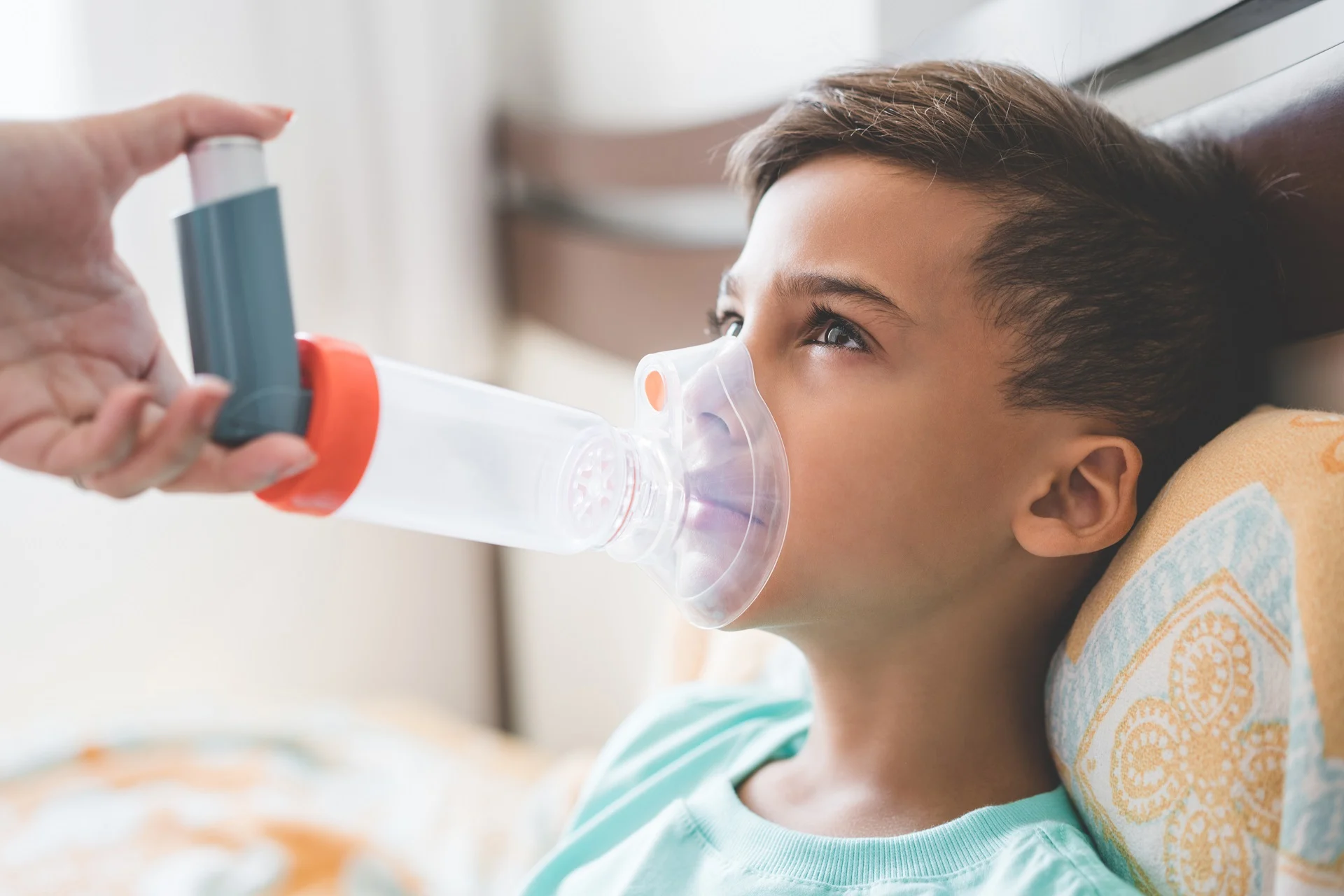
A lingering cough draws attention. Cough that lasts more than a week often signals something deeper. Many parents wait, hoping it resolves. But when it persists, evaluation is necessary. Not every cough is viral. Some start as mild infections and shift into more complex issues. Asthma, bronchitis, or even early pneumonia can present subtly. Children may play normally but struggle during sleep. Nighttime coughing becomes louder. Post-viral syndromes also exist. The timeline matters more than volume.
Wheezing during or after activity could indicate underlying airway inflammation
Breath sounds vary. Wheezing during or after activity could indicate underlying airway inflammation. Kids run, then suddenly stop and cough. They lean forward to catch breath. These aren’t just growing pains. Airway restriction plays a role. Allergens, infections, or cold air may trigger it. Some children wheeze only during colds. Others do during playtime. Asthma doesn’t always follow textbook patterns. Diagnosis involves history, not just tests.
Respiratory syncytial virus causes more hospitalizations than most parents expect
Names don’t always convey severity. Respiratory syncytial virus causes more hospitalizations than most parents expect. It spreads fast in daycares. Infants and toddlers suffer most. They breathe rapidly, eat less, and struggle to sleep. Fever may be absent. But retractions around the ribs become visible. Oxygen levels drop. Doctors focus on supportive care. There’s no direct cure. Prevention through hygiene matters most.
Stridor often appears suddenly, especially at night
Noise can frighten families. Stridor often appears suddenly, especially at night. It’s a high-pitched sound during inhalation. Often caused by croup, it follows a viral illness. Barking cough joins in. Breathing becomes labored. Cool air sometimes helps. Emergency visits increase during winter peaks. Most children recover within days. But steroids might be given for relief. Observation helps determine if more care is needed.
Not every child with bronchitis needs antibiotics
Parents want quick solutions. Not every child with bronchitis needs antibiotics. Most cases are viral. They resolve slowly with fluids and rest. Cough may sound dramatic. But lungs stay clear. Some children wheeze or spike mild fevers. Overmedicating becomes a concern. Doctors often explain the natural course. Reassurance matters. Patience speeds recovery more than prescriptions in most cases.
Sinus infections can follow prolonged colds, especially in school-aged kids
Head pressure tells a story. Sinus infections can follow prolonged colds, especially in school-aged kids. They rub eyes and complain of cheek pain. Nasal drainage thickens. Mornings become tough. Postnasal drip leads to coughing. Teachers report distraction or fatigue. Antibiotics may be necessary. But again, timing is crucial. Ten days of worsening symptoms often signals bacterial involvement.
Allergic rhinitis causes nasal symptoms without infection
Not every sneeze means illness. Allergic rhinitis causes nasal symptoms without infection. It mimics colds. But fevers don’t occur. Children rub noses, sniff constantly, and breathe through mouths. Eyes get itchy. Outdoor exposure worsens it. Dust and pollen often trigger responses. Allergy testing might be recommended. Antihistamines bring relief. Controlling the environment plays a big role.
Laryngitis causes voice changes and raspy speech
A quiet voice signals more. Laryngitis causes voice changes and raspy speech. It often follows viral infections. Kids whisper or lose their voice completely. They strain to speak during class. Yelling or singing worsens it. Teachers notice before parents do. Rest helps most. Sometimes, it’s part of broader airway inflammation. Hydration and silence heal better than medications.
Bronchiolitis affects infants more severely than older kids
Age changes impact. Bronchiolitis affects infants more severely than older kids. Caused by RSV, it leads to small airway swelling. Babies breathe fast, flare nostrils, and feed poorly. Cough sounds wet but shallow. Hospital stays become common in the first year of life. Oxygen therapy supports breathing. Suctioning secretions helps more than antibiotics. Monitoring is continuous.
Recurrent pneumonia raises questions beyond simple infection
Patterns reveal concern. Recurrent pneumonia raises questions beyond simple infection. When it keeps returning, deeper issues are explored. Immune disorders, asthma, or congenital anomalies may play a part. Some kids aspirate during feeding. Others have undiagnosed reflux. Imaging helps, but timing matters. Repeated shadows in the same area require attention. One pneumonia isn’t always the end.
Whooping cough starts with mild cold symptoms before turning dangerous
Time complicates detection. Whooping cough starts with mild cold symptoms before turning dangerous. It mimics a normal illness. But then the cough explodes. Fits come in waves. Children struggle to breathe during episodes. Vomiting follows. Infants are hit hardest. Vaccination lowers risk but doesn’t erase it. Diagnosing early helps reduce spread. Community awareness is key.
Foreign body aspiration may go unnoticed at first
A moment can change everything. Foreign body aspiration may go unnoticed at first. A child chokes, then resumes playing. Parents think it passed. But days later, coughing or wheezing begins. Chest X-rays might show asymmetry. Some objects are invisible. Bronchoscopy becomes necessary. Nuts, beads, and small toy parts cause many cases. Prevention lies in supervision, not always visibility.
Chronic cough without fever often relates to postnasal drip
Symptoms linger without heat. Chronic cough without fever often relates to postnasal drip. Mucus slides down the throat unnoticed. Children clear throats frequently. Night cough dominates. It disturbs rest. No chest findings appear. Decongestants may help. Treating the source—sinuses or allergies—matters more than soothing the throat. Diagnosis comes from pattern, not presence of illness.
Asthma doesn’t always present with classic wheezing
Assumptions lead to oversight. Asthma doesn’t always present with classic wheezing. Some children only cough. Others feel chest tightness after running. Parents report they’re “slower” than peers. Nighttime symptoms may be stronger than daytime ones. Spirometry confirms airflow issues. Preventive inhalers become routine. Avoiding triggers helps reduce flares. Awareness grows through repeated episodes.
A single fever isn’t always cause for panic, but breathing changes are
Thermometers don’t tell all. A single fever isn’t always cause for panic, but breathing changes are. Fast breathing, flaring nostrils, or chest retractions raise alarms. Oxygen drops quietly. Parents should watch breath rate, not just temperature. Quiet babies with labored breathing may be sicker than loud ones. Video clips help pediatricians diagnose remotely. Action beats guesswork.
Congestion in newborns doesn’t always mean sickness
Nasal noise worries new parents. Congestion in newborns doesn’t always mean sickness. Their airways are narrow. A bit of mucus sounds worse than it is. Saline drops clear it. Elevating the head helps sleep. Feeding and breathing together challenge infants. Watching for weight gain gives clues. If breathing worsens during feeds, evaluation is necessary.
Environmental smoke worsens all types of respiratory issues
Home factors matter. Environmental smoke worsens all types of respiratory issues. Even outdoor exposure has impact. Secondhand smoke increases infection risk. Asthmatic children react immediately. Recovery slows. Smokers in the household often underestimate exposure. Clothes and hair carry particles. Air purifiers help, but removal works best. Clear air means clearer lungs.
Gastroesophageal reflux may mimic lung problems in babies
Reflux isn’t always obvious. Gastroesophageal reflux may mimic lung problems in babies. They cough during feeds. Arches appear after meals. Milk returns silently. Aspiration inflames lungs. Chronic congestion follows. Doctors may suggest thickening feeds. Positioning matters. Medications support severe cases. Not all coughs stem from infection—some rise from below.
